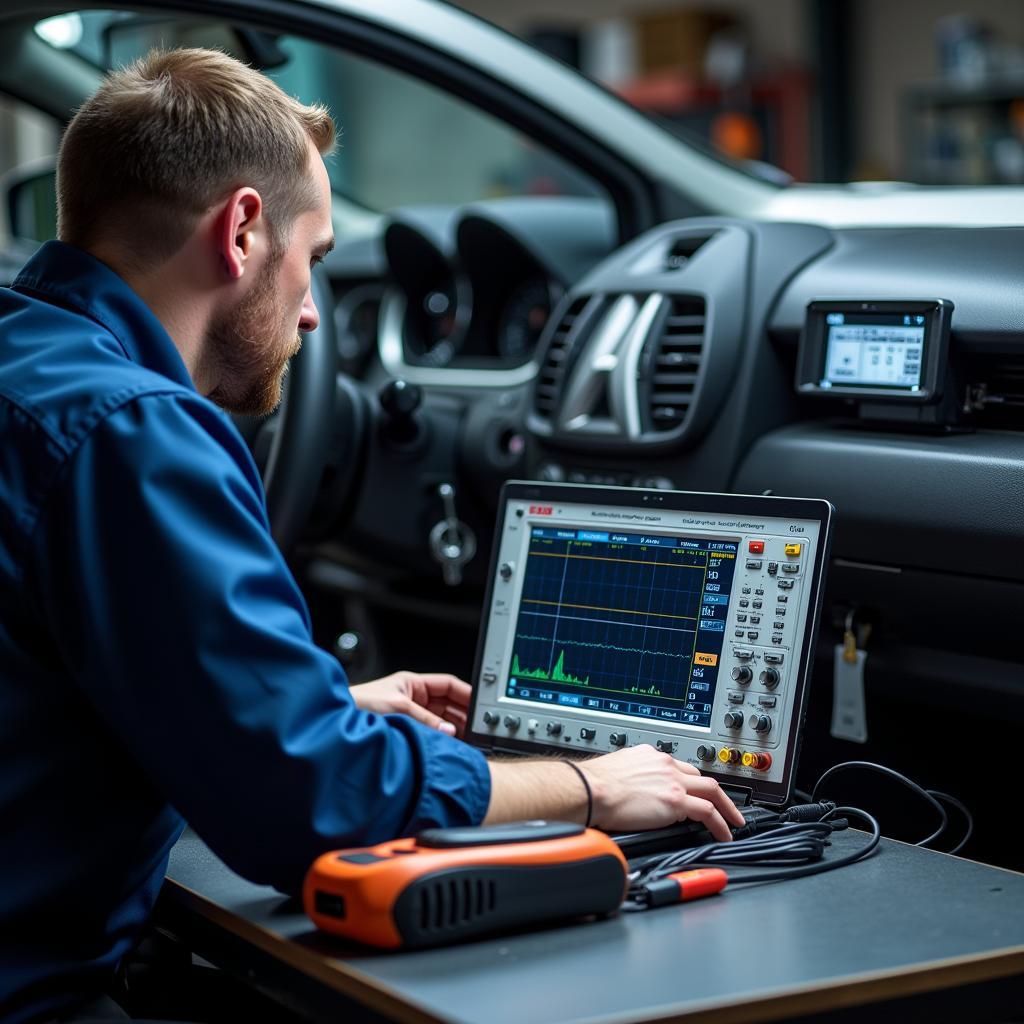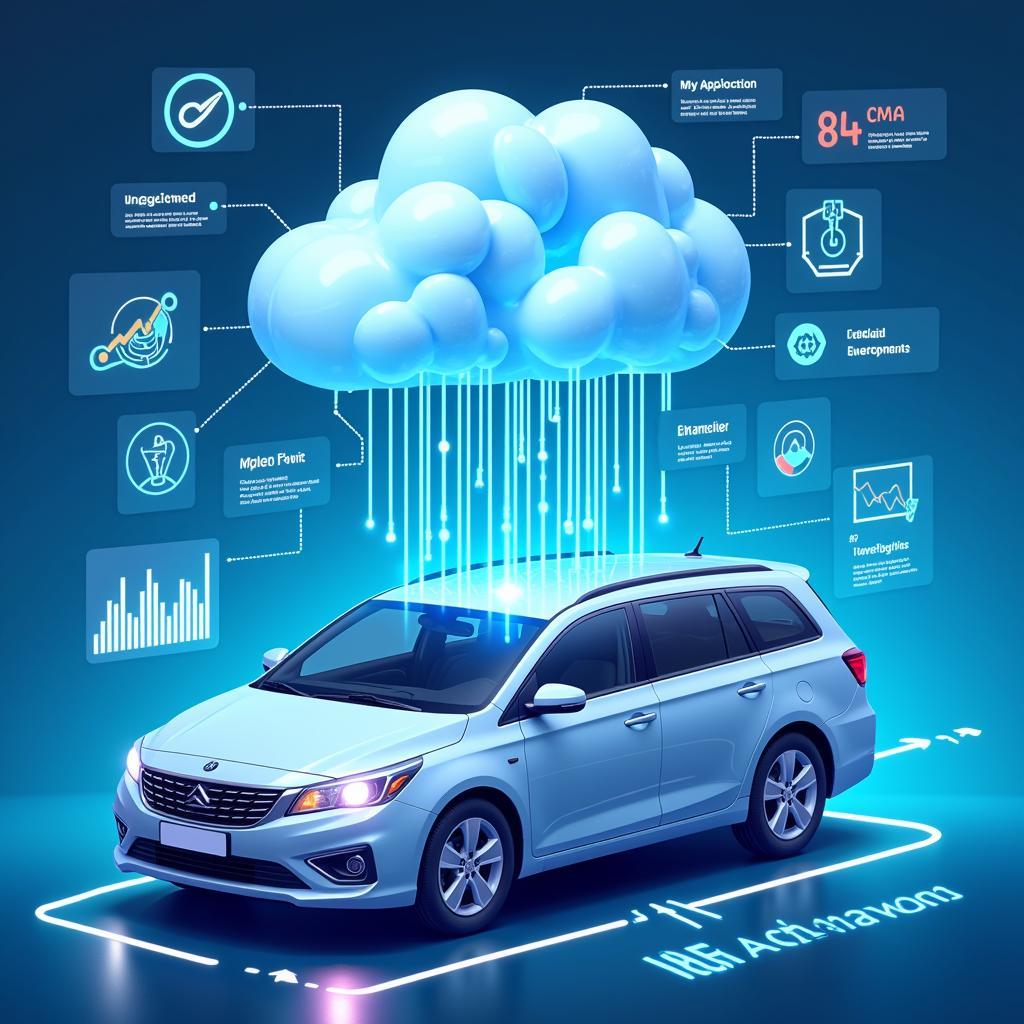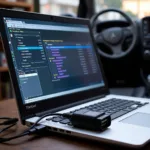Car diagnostic background is essential for anyone working with modern vehicles. From professional mechanics to DIY enthusiasts, understanding the underlying principles of car diagnostics allows for efficient troubleshooting and repair. This article dives deep into the history, evolution, and future of car diagnostics, equipping you with the knowledge you need to navigate this complex landscape.
A Historical Look at Car Diagnostic Background
Early car diagnostics relied heavily on mechanical expertise and intuition. Mechanics would listen for unusual noises, feel for vibrations, and use basic tools to pinpoint issues. As vehicles became more complex, so did the diagnostic process. The introduction of onboard diagnostic systems (OBDs) in the 1980s revolutionized the field. These systems, initially designed to monitor emissions, paved the way for more sophisticated diagnostic capabilities.
The OBD Evolution: From OBD-I to OBD-II
The first generation of OBD, known as OBD-I, provided limited diagnostic information and lacked standardization. OBD-II, introduced in the mid-1990s, brought significant improvements, including a standardized diagnostic connector and a universal set of diagnostic trouble codes (DTCs). This standardization simplified the diagnostic process and allowed for greater interoperability between different scan tools and vehicle makes and models.
The evolution of OBD has been driven by advancements in sensor technology and computing power. Modern vehicles are equipped with a network of sensors that constantly monitor various systems, providing a wealth of data that can be used for diagnostics. This data is processed by the vehicle’s electronic control unit (ECU), which acts as the brain of the car’s diagnostic system.
Decoding the Language of Car Diagnostics
Understanding the language of car diagnostics is crucial for effective troubleshooting. DTCs are alphanumeric codes that represent specific faults detected by the OBD system. Each code corresponds to a particular problem area, such as the engine, transmission, or emissions system. Learning how to interpret these codes can save you time and money by guiding you towards the root cause of a problem.
Beyond DTCs: Advanced Diagnostic Techniques
While DTCs provide a starting point for diagnostics, they often don’t tell the whole story. Advanced diagnostic techniques, such as live data streaming and oscilloscope analysis, are often necessary to pinpoint the exact cause of a problem. These techniques allow technicians to observe the real-time behavior of various sensors and actuators, providing a more detailed picture of the system’s performance.
“DTCs are like clues,” says John Smith, a seasoned automotive diagnostician with over 20 years of experience. “They point you in the right direction, but you still need to do the detective work to solve the case.”
The Future of Car Diagnostic Background
The future of car diagnostics is rapidly evolving, driven by advancements in artificial intelligence (AI) and machine learning. These technologies have the potential to revolutionize the diagnostic process by automating complex tasks, predicting potential failures, and providing personalized diagnostic solutions.
Embracing the Digital Age of Car Diagnostics
As vehicles become increasingly connected, the diagnostic process is becoming more data-driven. Cloud-based diagnostic platforms allow for remote diagnostics and over-the-air software updates, providing greater convenience and efficiency. These platforms also enable the sharing of diagnostic data and insights, fostering collaboration and innovation within the automotive industry.
“The integration of AI and machine learning will transform the way we diagnose and repair vehicles,” explains Jane Doe, a leading expert in automotive technology. “Imagine a system that can predict potential failures before they happen, saving drivers time and money.”
Conclusion
Understanding car diagnostic background is crucial in today’s automotive landscape. From the early days of mechanical diagnostics to the digital age of AI-powered systems, the field has come a long way. By embracing these advancements and staying up-to-date with the latest diagnostic techniques, you can ensure efficient and effective car repair. Staying informed about car diagnostic background allows you to effectively maintain and repair modern vehicles.
FAQ
- What is OBD-II?
- How do I interpret DTCs?
- What are some advanced diagnostic techniques?
- What is the role of AI in car diagnostics?
- How can I stay up-to-date with the latest diagnostic trends?
- What are the benefits of cloud-based diagnostic platforms?
- What are some common car diagnostic problems?
Car Diagnostic Services
| Service | Description | Price |
|---|---|---|
| OBD-II Diagnostic Scan | Comprehensive scan for diagnostic trouble codes | $50 |
| Advanced Diagnostic Analysis | In-depth analysis using oscilloscope and other tools | $100 |
| Pre-Purchase Inspection | Diagnostic check before buying a used car | $75 |


Have other questions or need further assistance? Visit our page on delphi cars and trucks diagnostic machine installation 2015.3.
Need more information about diagnostic tools? See our other articles on our website.
Contact us via WhatsApp: +1(641)206-8880, or Email: [email protected]. Our customer support team is available 24/7.


